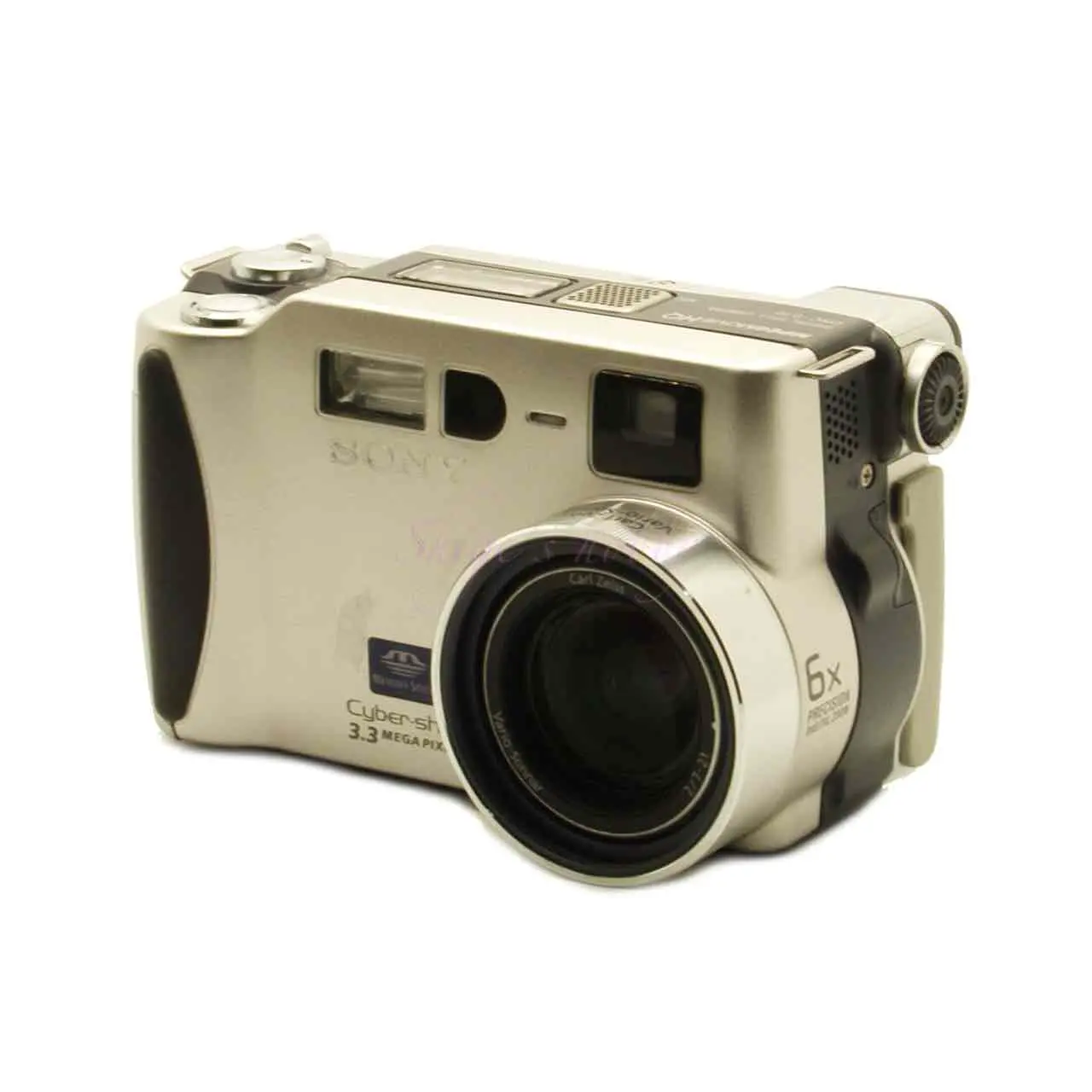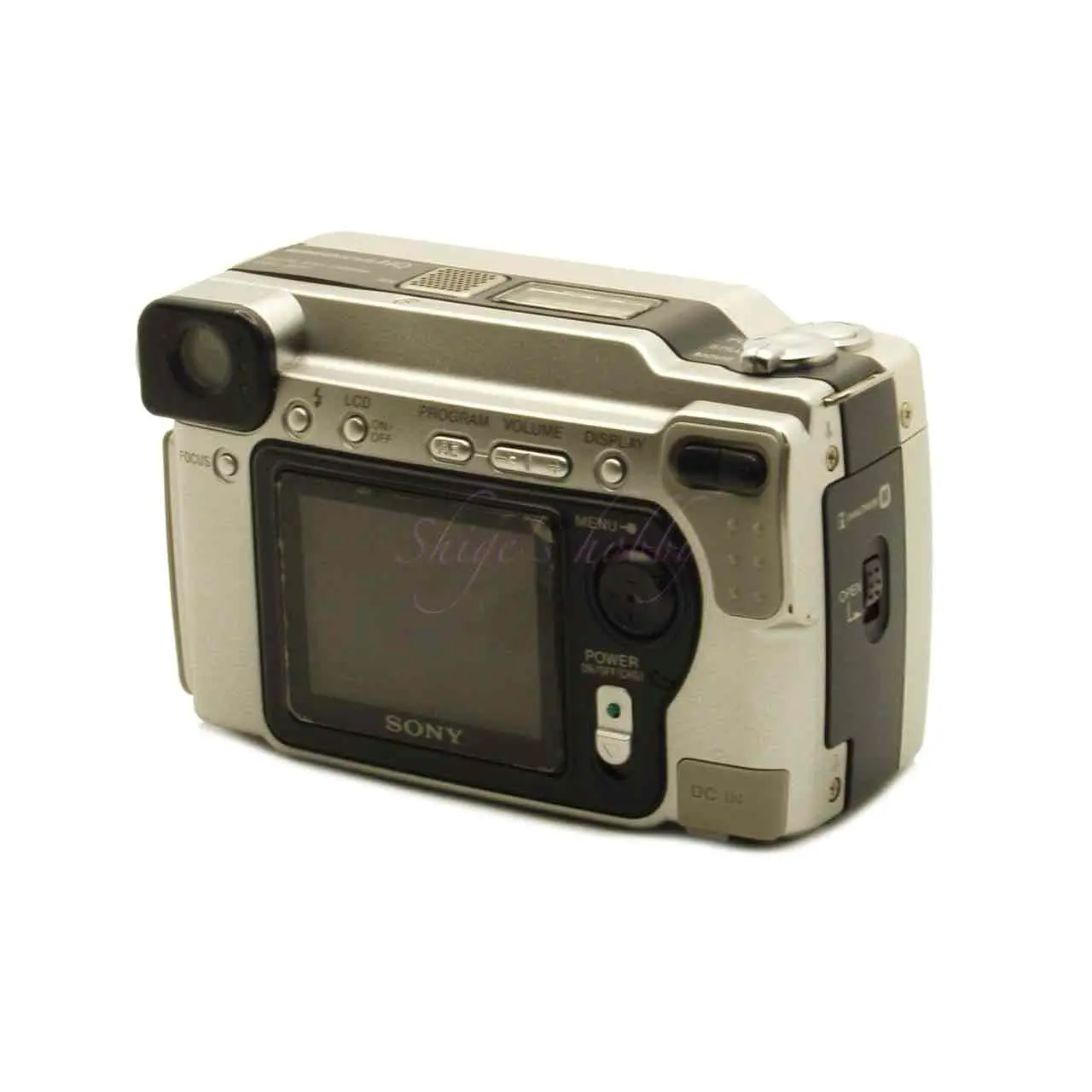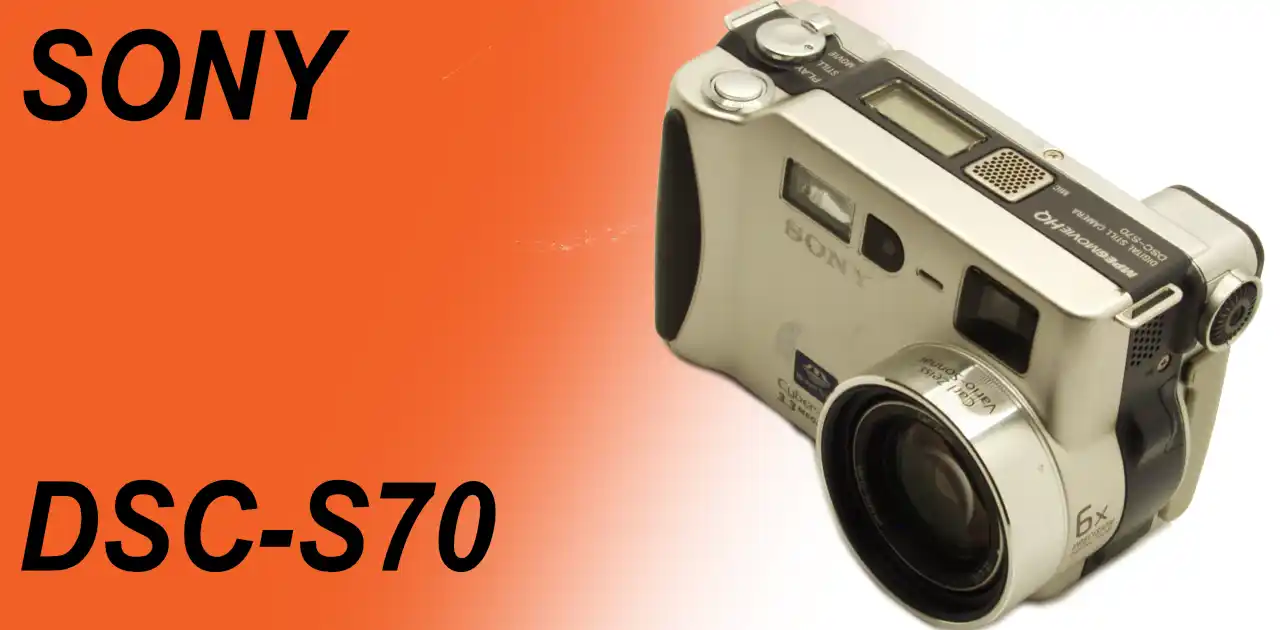A review and sample photos of the SONY DSC-S70 compact digital camera.
- Please see the disclaimer regarding advertising here.
- Italicized links in the text are advertisement links that take you to other sites.
Table of contents

Gallery
Review


1.Overview
The SONY DSC-S70 is a compact digital camera released by Sony in 2000.
Key specifications include a 3-megapixel CCD sensor, a 3x optical zoom lens (34mm-102mm in 35mm format equivalent), a real-image optical viewfinder, a 1.8-inch rear LCD screen with 120,000 pixels.
The 6x zoom listed on the camera’s label is the zoom ratio when used in conjunction with the digital zoom.
The sensor size is 1/1.8 inches, and the actual focal length at the wide-angle end is 7mm, which can be confirmed by converting it to a 34mm focal length in 35mm format equivalent (conversion ratio 4.85).
The recording media is Memory Stick.
The camera uses high-capacity batteries such as the NP-FM50 and NP-FM500H, which are the same as those used in Sony SLR cameras.
2.Usability
Being a camera from 2000, the SONY DSC-S70 is slow to start up.
At 6cm thick, the camera is quite thick, about the same thickness as a small SLR camera.
However, this makes it easy to hold and stable when shooting, helping to prevent camera shake.
And what’s notable about this camera’s 34mm-102mm zoom range is that it’s bright, with an aperture value of f/2 at the wide-angle end of 34mm and f/2.5 at the telephoto end of 102mm.
With slim compact digital cameras, even if the wide-angle end is around f/2.8, many cameras have aperture values exceeding f/5 at focal lengths of around 100mm. In such cases, even if the camera has image stabilization, there is a high chance of camera shake in slightly darker conditions.
The macro function can be switched on and off using the Focus button on the back of the body. The Focus button operates as follows: Macro > 0.5m > 1m > 3m > 7m > Infinity. Having Macro at the top is a nice touch. Having to press it five times to return to normal mode feels like a lack of well-thought-out operation.
After pressing the power button, the opening screen appears, followed by a brief pause before you can start shooting. The autofocus and autoexposure (brightness adjustment) tracking speeds are typical of cameras of this era, so pressing the shutter immediately after startup will result in an out-of-focus photo with inappropriate brightness.
Due to its functionality, the zoom-linked real-image optical viewfinder does not allow you to check the focus position, only the shooting range. You can confirm the focus position by the sound it makes when focusing. Naturally, the focus sound is only made when the camera determines that focus has been achieved, so it is unclear where the focus is.
Also, with a real-image viewfinder, the image you see matches the actual shot fairly well at long distances, but as you get closer, the parallax between the lens and viewfinder positions causes the shooting position and the visible position to differ, so you need to be careful. This is common with compact digital cameras. With an electronic viewfinder, there’s no misalignment because you’re looking at the rear LCD screen, so those using an optical viewfinder for the first time may be confused. In that sense, SLRs are a well-designed system because there’s no misalignment in the image and you can see the focus position.
Also, the rear display is a live view, so it shows what the lens is capturing, but its specifications are 1.8 inches and 110,000 dots, dating back to the early 2000s, so the display quality of the rear display is low, and while you can determine the composition, the focus position is unreliable.
So, you’ll have to wait until you see the shot to find out the focus position.
The exposure compensation function is located in the menu, so it can be a hassle to change it.
The camera has a Program button for switching shooting modes, which allows you to select five different shooting modes: manual aperture setting (A mode), manual shutter speed setting (S mode), and other settings. However, selecting a setting requires a single press; once you select S mode, you have to press the button five times to select A mode, which again makes it less user-friendly. The higher-end DSC-S75 and DSC-S85 cameras are equipped with a mode dial and jog dial, making them easier to use.
As for the brightness of the captured image, the exposure lock function works, so you don’t have to adjust the exposure settings; if you lock the exposure in a dark location and then point the camera at a bright spot, you can take bright, overexposed photos, and if you lock the exposure in a bright location, you can take dark photos. Some compact digital cameras automatically recalculate the exposure based on the lens position even when the shutter is half-pressed, so I quite like this camera’s ability to lock the exposure.
Lens distortion in the captured JPG images is barely noticeable, even at the wide-angle end of 34mm. The combination of a small sensor and a large-aperture lens utilizes the center of the lens, which has minimal distortion, resulting in minimal distortion. In comparison, the lenses of stylish compact digital cameras are clearly stretched optically, partly due to the wide 24mm wide-angle end.
The auto white balance has four modes: Auto, Indoor, Outdoor, and Hold. According to the manual, Indoor refers to “night scenes,” while Hold is for “shooting monochromatic subjects or backgrounds.” Is it also intended for product photography? It seems to be primarily used in Auto mode. There is also no ISO setting.
The number of shots displayed on the monitor does not decrease, but increases as more shots are taken, so users need to keep track of how many shots remain. At the highest resolution of 2048×1536, a 64MB memory stick can capture approximately 50 shots. While the resolution can be adjusted, the image compression rate cannot. Instead, there is an uncompressed TIFF mode in the menu. The image size of a single TIFF image is approximately 16MB, meaning you can only fit four images on a 64MB Memory Stick.
The compatible memory card is Memory Stick, and PRO is not supported. When using the Memory Stick Duo Adapter MSAC-M2, you will need to purchase a small-capacity Memory Stick Duo card that does not have the PRO label.
The power and battery covers have a locking mechanism, so there is no need to worry about them opening and closing accidentally, which is good, but can sometimes be a hassle in actual use.
3.Summary
In conclusion , to sum up the SONY DSC-S70, its high-capacity battery designed for SLR cameras provides excellent battery life. While the included NP-FM50 battery is difficult to obtain, the NP-FM500H compatible with this camera is still available as a new, genuine battery, so those with concerns about compatible batteries should use this.
For a compact digital camera from 2005, its body is a bit thick and unstylish, and its focal length is mediocre, with a 3x zoom of 34mm-102mm. However, its bright maximum aperture is an advantage.
Specifications, considerations, etc.
The DSC-S70 is a sibling camera to the DSC-S30, DSC-S50, DSC-S75, and DSC-S85, which were released between 2000 and 2001.
The DSC-S30, DSC-S50, and DSC-S70 were released in 2000, while the DSC-S75 and DSC-S85 were released in 2001.
The DSC-S75 and DSC-S85, released in 2001, are improved versions of the DSC-S70. While the basic camera components, such as the lens, are nearly identical to the DSC-S70, the button layout on the camera body has been improved, and devices such as a mode dial and jog dial have been added to improve operability. Additionally, while the DSC-S75 has the same 3-megapixel image sensor as the DSC-S70, the DSC-S85 is the only one with an increased pixel count of 4-megapixel.
| Items | S30/S50 | S70/S75/S85 |
| Zoom | 3倍 | 3倍 |
| Focal length | 39-117 | 34-102 |
| Lens bland | Sony | Carl Zeiss |
| Lens Construction | Unknown | 11 elements in 7 groups |
| Aperture | F2.8-2.9 | F2-2.5 |
| Number of Pixels | 1.25 million 2.02 million | 3.24 million: S70/S75 3.98 million: S85 |
| Image sensor size | 1/2.7 | 1/1.8 |
| View Finder | Real image optics | Real image optics |
| LCD size | 1.8 inch 120,000 | 1.8 inch 120,000 |
| Battery | NP-FM50 | NP-FM50 |
| Recorded media | Memory stick | Memory stick |
| Wight(g) only camera | 316 | 310:S70 352:S75/S85 |
| Size(mm)(WxHxD) | 113×68×69 | 117×71×64 |
| Release date | 2000.4 | 2000.3:S70 2001.4:S75 2001.6:S85 |
| Body color | Silver | Silver:S70 Glay:S75 Black:S85 |
Option
- DSC-S70 Dedicated Adapter Ring “VAD-S70” – Suggested Retail Price: ¥2,500 (excluding tax)
- Memory Stick / Memory Stick Pro
Reference links
- DSC-S70, DSC-S50, DSC-S30 Press Release
- DSC-S70, DSC-S50, DSC-S30 specifications
- DSC-S75 Press Release
- DSC-S85 Press Release
- DSC-S70・manual
- DSC-S75,DSC-S85・manual
Affiliate links

Amazon Prime Sale
Update history
- 2025.8.21


Be First to Comment